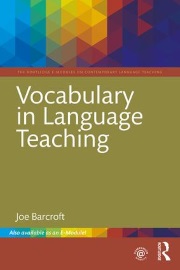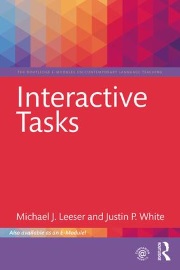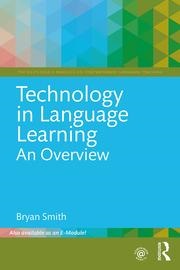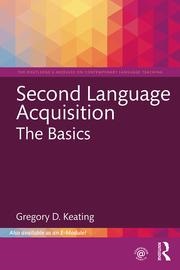New from Routledge
Menu
Active Listening by Michael Rost
Teaching Second Language Writing by Charlene Polio
Vocabulary in Language Teaching by Joe Barcroft
Interactive Tasks by Michael J. Leeser, Justin P. White
Technology in Language Learning: An Overview by Bryan Smith
Second Language Acquisition. The Basics by Gregory D. Keating

 
Description
Listening is now regarded by researchers and practitioners as a highly active skill involving prediction, inference, reflection, constructive recall, and often direct interaction with speakers. In this new theoretical and practical guide, Michael Rost and JJ Wilson demonstrate how active listening can be developed through guided instruction. With so many new technologies and platforms for communication, there are more opportunities than ever before for learners to access listening input, but this abundance leads to new challenges: how to choose the right input how to best use listening and viewing input inside and outside the classroom how to create an appropriate syllabus using available resources Active Listening explores these questions in clear, accessible prose, basing its findings on a theoretical framework that condenses the most important listening research of the last two decades. Showing how to put theory into practice, the book includes fifty innovative activities, and links each one to relevant research principles. Sample audio recordings are also provided for selected activities, available online at the series website www.pearsoned.co.uk/rostwilson
As a bridge between theory and practice, Active Listening will encourage second language teachers, applied linguists, language curriculum coordinators, researchers, and materials designers to become more active practitioners themselves, by more fully utilising research in the field of second language listening.

 
Description
This module explores the purposes of and methods for teaching second language writing. Engaging and accessible, Teaching Second Language Writing is organized into three sections that mainly focus on activities, approaches, and real-life writing tasks and genres that are the most applicable and useful for the language teaching classroom.

 
Description
This module focuses on the pivotal role of vocabulary in language acquisition, communication, and instruction. It first reviews the nature of vocabulary knowledge, the mental lexicon, and different contexts of vocabulary learning. It then explains how we acquire vocabulary and refine vocabulary knowledge over time. The primary emphasis is on how language instructors can promote evidence-based vocabulary instruction in the classroom. To this effect, the module highlights telling research on the effects of specific tasks (e.g. sentence writing and copying target words) and different ways of presenting target words (e.g. having multiple talkers instead of a single talker producing the target words). It also outlines an effective approach to teaching vocabulary, one that emphasizes multiple presentations of target vocabulary, specificity in the relationship between task type and learning outcomes, and the gradual build-up of language-specific vocabulary knowledge over time. A sample lesson based on this approach is also provided.

 
Description
This module on interactive tasks provides teachers with an overview of the nature of communication and explores the ways in which interactive tasks can promote communicative exchanges among students and teachers. The module provides guidelines for developing tasks, along with examples and options for their use in various types of language courses, including beginner-level language classes as well as more advanced language courses focusing culture, linguistics, literature, and film.

 
Description
This module on technology in language learning provides novice and experienced second and foreign language (L2) teachers alike with an introduction to the field of computer-assisted language learning (CALL). The module first provides a historical overview of the field and then explores the most widely researched areas within CALL. The module examines findings of research into computer-mediated communication for L2 learning as well as L2 skill-area instruction in technology-enhanced settings. The unit then turns to a discussion of teacher and learner standards for using CALL, followed by a discussion of how one may find and evaluate CALL resources that are appropriate for specific instructional contexts. The module ends with an introduction to four of the newest and most exciting areas in CALL: gaming, fan fiction, digital storytelling, and mobile-assisted language learning.

 
Description
Starting from the premise that language instruction should be informed by how humans learn language, this module on second language acquisition (SLA) aims to provide teachers at any level with a comprehensive and up-to-date introduction to the key findings about how second languages are learned in adulthood. This module explores a variety of topics, including the mechanisms in the mind responsible for language acquisition, the roles that input and output play in acquisition, and how language develops in the learner’s mind over time. Furthermore, the module explores the many factors believed to impact the outcome of SLA, such as the role of the native language, individual differences in aptitude and motivation, and age of acquisition.



|